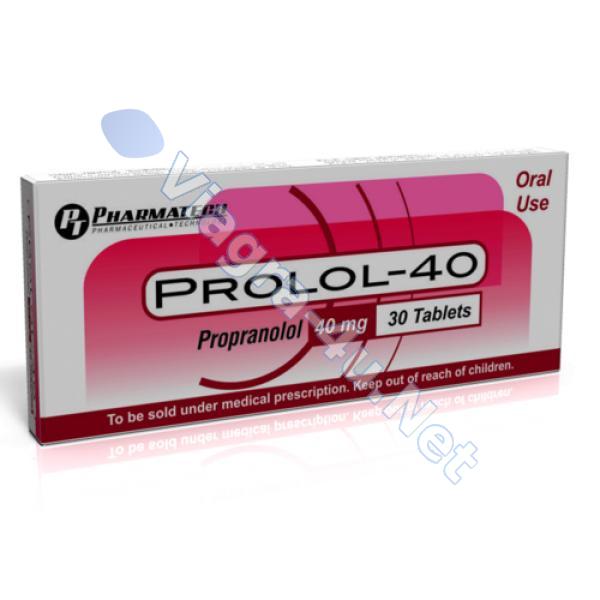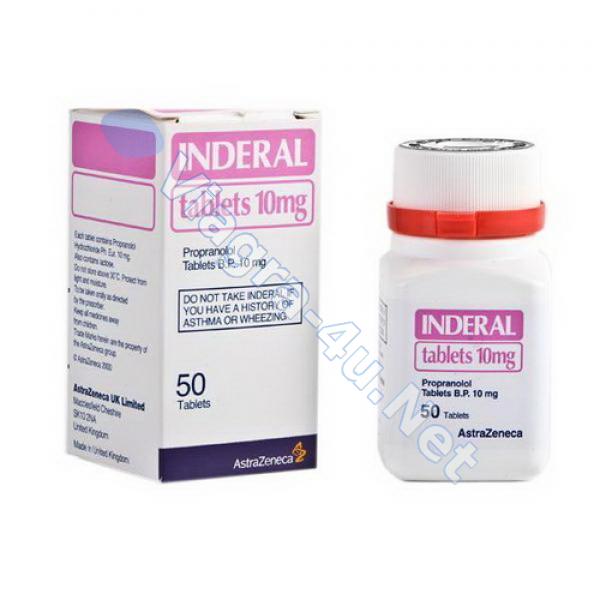

Propranolol is a medication of the beta blocker type. It is used to treat high blood pressure, a number of types of irregular heart rate, thyrotoxicosis, capillary hemangiomas, performance anxiety, and essential tremors. It is used to prevent migraine headaches, and to prevent further heart problems in those with angina or previous heart attacks.
Propranolol is used for treating various conditions, including:
- Hypertension
- Angina pectoris (with the exception of variant angina)
- Tachyarrhythmias
- Myocardial infarction
- Control of tachycardia/tremor associated with anxiety, panic, hyperthyroidism, or lithium therapyWhile once a first-line treatment for hypertension, the role for beta blockers was downgraded in June 2006 in the United Kingdom to fourth-line, as they do not perform as well as other drugs, particularly in the elderly, and evidence is increasing that the most frequently used beta blockers at usual doses carry an unacceptable risk of provoking type 2 diabetes.
Propranolol is not recommended for the treatment of hypertension by the Eighth Joint National Committee (JNC 8) because a higher rate of the primary composite outcome of cardiovascular death, myocardial infarction, or stroke compared to an angiotensin receptor blocker was noted in one study.
Propranolol is also used to lower portal vein pressure in portal hypertension and prevent esophageal variceal bleeding and ascites.
Psychological
It is occasionally used to treat performance anxiety. Evidence to support the use in other anxiety disorders is poor.
Propranolol is being investigated as a potential treatment for post-traumatic stress disorder (PTSD). Propranolol works to inhibit the actions of norepinephrine, a neurotransmitter that enhances memory consolidation. Individuals given propranolol immediately after trauma experienced fewer stress-related symptoms and lower rates of PTSD than respective control groups who did not receive the drug.
It has been studied for improvement of social communication skills in people with autism spectrum disorder.
Other
- Essential tremor. Evidence for use for akathesia however is insufficient;
- Migraine prevention;
- Cluster headache prevention;
- Hyperhidrosis;
- Proliferating infantile hemangioma;
- Glaucoma;
- Thyrotoxicosis by deiodinase inhibition;
- Primary exertional headache;
Propranolol may be used to treat severe infantile hemangiomas (IHs). This treatment shows promise as being superior to corticosteroids when treating IHs. Extensive clinical case evidence and a small controlled trial support its efficacy.
Adverse effects
Due to the high penetration across the blood-brain barrier, lipophilic beta blockers such as propranolol and metoprolol are more likely than other less lipophilic beta blockers to cause sleep disturbances such as insomnia and vivid dreams, and nightmares.
Adverse drug reactions (ADRs) associated with propranolol therapy are similar to other lipophilic beta blockers.
Precautions and contraindications
Propranolol should be used with caution in people with:
- Diabetes mellitus or hyperthyroidism, since signs and symptoms of hypoglycaemia may be masked
- Peripheral vascular disease and Raynaud's syndrome, which may be exacerbated
- Phaeochromocytoma, as hypertension may be aggravated without prior alpha blocker therapy
- Myasthenia gravis, which may be worsened
- Other drugs with bradycardic effects
Propranolol is contraindicated in patients with:
- Reversible airways diseases, particularly asthma or chronic obstructive pulmonary disease (COPD);
- Bradycardia (<60 beats/minute);
- Sick sinus syndrome;
- Atrioventricular block (second- or third-degree);
- Shock;
- Severe hypotension;
-Cocaine toxicity;
Pregnancy and lactation
Propranolol, like other beta blockers, is classified as pregnancy category C in the United States and ADEC category C in Australia. β-blocking agents in general reduce perfusion of the placenta which may lead to adverse outcomes for the neonate, including pulmonary or cardiac complications, or premature birth. The newborn may experience additional adverse effects such as hypoglycemia and bradycardia
Pharmacokinetics
Propranolol is rapidly and completely absorbed, with peak plasma levels achieved about 1–3 hours after ingestion. Coadministration with food appears to enhance bioavailability.
Despite complete absorption, propranolol has a variable bioavailability due to extensive first-pass metabolism. Hepatic impairment therefore increases its bioavailability. The main metabolite 4-hydroxypropranolol, with a longer half-life (5.2–7.5 hours) than the parent compound (3–4 hours), is also pharmacologically active.
Propranolol is a highly lipophilic drug achieving high concentrations in the brain. The duration of action of a single oral dose is longer than the half-life and may be up to 12 hours, if the single dose is high enough (e.g., 80 mg). Effective plasma concentrations are between 10 and 100 mg/l. Toxic levels are associated with plasma concentrations above 2000 mg/l.